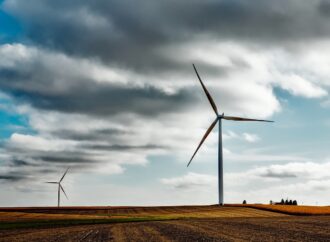Thus far global greenhouse gas (GHG) emissions stabilized or decreased only in times of economic downturn, for example in 2008/09. The stabilization of energy-related carbon dioxide (CO2) emissions in 2014 when the global economy grew by 3% comes as a total surprise. What to make of this news?
The “iron law of climate policy,” introduced into common parlance by the political scientist Roger Pielke Jr., holds that “when policies on emissions reductions collide with policies focused on economic growth, economic growth will win out every time.” Ever since politicians envisaged the Kyoto Protocol the aim of an international climate treaty has been to square this circle: to decouple economic growth from GHG emissions. What has proven elusive over the past decades, as these graphs illustrate, was achieved in 2014 for energy-related CO2 emissions, reported the International Energy Agency (IEA). Although all policies were geared towards growing the economy, CO2 emissions did not rise as they should have done.
How did the stabilization of CO2 emissions come about? The IEA says the halt is due to a variety of factors including “changing patterns of energy consumption in China and OECD countries. In China, 2014 saw greater generation of electricity from renewable sources, such as hydropower, solar, wind and less burning of coal. In OECD economies, recent efforts to promote more sustainable growth – including greater energy efficiency and more renewable energy – are producing the desired effect of decoupling economic growth from greenhouse gas emissions.” The IEA has promised to deliver a more conclusive answer in a report due in June.
The scientific attribution of CO2 emission stabilization to specific sectors and countries is naturally fraught with uncertainties. In the contentious politics of climate change these findings are prone to become subject to partisan disputes in which positions have long been taken up – just look at the discussions raging around the surprising “global warming pause”: any attempt of an explanation (attribution) has immediately been shot down by the political opponent as not properly scientific.
For the supporters of a binding international climate treaty the IEA news is no reason for complacency either: “These figures show that green growth is achievable not just for Britain but for the world. However we cannot be complacent – we need to dramatically cut emissions, not just stop their growth. Getting a new global climate deal is absolutely vital, and the year ahead is going to be of critical importance,” the UK energy and climate secretary Ed Davey summarized the EU’s position. “It provides much-needed momentum to negotiators preparing to forge a global climate deal [at the 21st Conference of Parties] in Paris in December,” the incoming executive director of IEA Fatih Birol echoed Davey.
Opponents of a legally binding global treaty on the other hand may argue that if emissions are stabilizing in the absence of a treaty, such an undertaking would not be needed after all. Alternatively, muses the social scientist Reiner Grundmann, “diplomats and politicians might be persuaded to sign a deal which merely affirms what has been achieved, or what seems to be achievable with little effort”. While this seems highly unlikely, we can expect also the IEA report to become absorbed by the partisan politics of climate change.
A technical ‘detail’ in the IEA report is crucial with regards to that debate: the stabilization of emissions refers to energy-related CO2, and the politics of climate change happens to be framed predominantly around questions of energy and CO2 emissions.
Meanwhile other much more potent yet more easily controllable GHGs may have increased also in 2014. As climate pragmatists have repeatedly stressed, these other (fluorinated) gases as well as black carbon (soot) present much lower hanging fruits for climate policy-makers. Policies aimed at their reduction are more likely to find bipartisan endorsement. And yet it is CO2 – notoriously difficult to control, requiring a byzantine set of (disputed) regulations – which remains prime target of climate policies.
Why then do negotiators and notably the EU not choose the path of less resistance? Another ‘iron’ law of social science research holds that no evidence will deter those who have already committed to a certain programme of action. Too much has been invested in ‘Kyoto’ for an EU-turn to be politically viable. Too many careers have been build around it. Thus, and in spite of some powerful nations having made it very clear that they will not take that ride, in Paris they will keep on flogging the dead horse of a binding international treaty, remaining impervious to good arguments against it.














Leave a Comment
Your email address will not be published. Required fields are marked with *